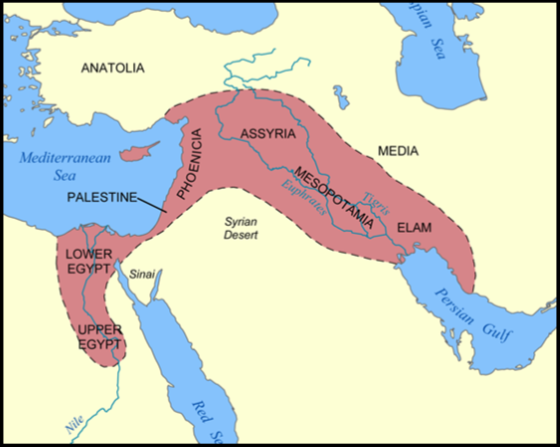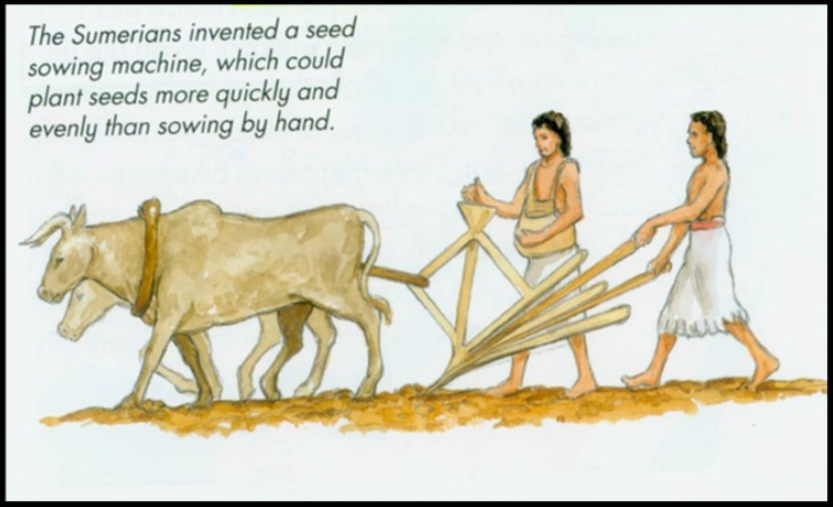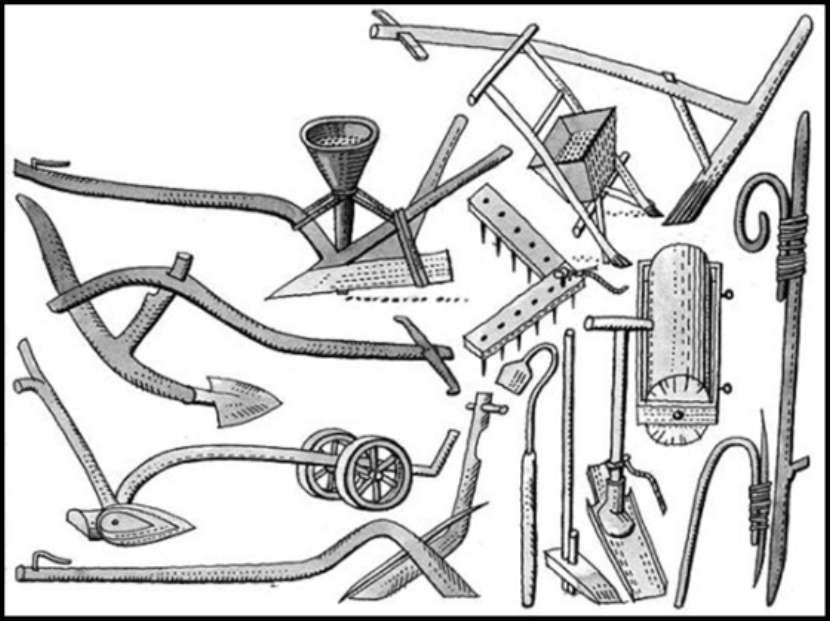

Tower and Town, May 2019 (view the full edition) (view the full edition)Sumer: The Land Where Civilisation BeganIn the long history of mankind, it is very interesting to note that Man 'Homo Sapiens' first appeared in Africa 200,000 years ago where climatic conditions were favorable, while large parts of North America, Northern Europe and Asia were covered with ice sheets. The last Glacial Maximum over these parts was about 26,000 years ago and deglaciation in the northern hemisphere only commenced about 20,000 years ago. The humid period began 14,800 years ago in North Africa, and the regions that are known later on as the Sahara and the Arabian Peninsula were wet and fertile and aquifers were full. In northern Mesopotamia (present-day Iraq) 10,000-9,000 years ago cultivation of barley and wheat began. At first they were used for beer, gruel, and soup, eventually for bread. Between 8,200 and 8,000 years ago a sudden decrease of global temperatures led to drier conditions in East Africa and the Arabian Peninsula, so rapid migration from these parts led to the increased settlement in the Mesopotamia/Fertile Crescent region around 4000 BC. The twin Rivers, Tigris and Euphrates, with their abundant waters, supplied the needed water for agriculture, and the rich fertile valley formed by their sediments accelerated the advancement of irrigation, (Figure 1).  Figiure 1: The Fertile Crescent Sumerians, whose origin is not settled, had inhabited the lower Mesopotamian valley around 4000 BC. They did not only invent irrigation as we know it but also were the builders of the first world civilization and saw to the emergence of urban life. This civilization had already flourished when the Egyptian civilization began in 3100 BC, followed by Indus River valley civilization early in 2600 BC. It was the Sumerians who had developed the oldest form of writing known as the "Cuneiform" around 3200 BC, thus triggering the beginning of recorded history. We may say, therefore, that anything before that time is called "Prehistory", which justifies the title of the book "History Begins at Sumer", written by the world authority on ancient Sumerian language and literature Samuel Kramer. The Sumerian Civilization was based on irrigated agriculture. The first successful efforts to harness the flow of water on a very large scale were made in Sumer. The people built cities and temples and dug canals which are the earliest of the world's engineering works. These people also fought over water rights and agricultural land, and irrigation was extremely vital to them. Flooding problems were more of a challenge here than in Egypt because the Tigris and Euphrates were much swifter than the Nile and carried much more silt. This resulted in rivers rising faster and changing their courses more often in Mesopotamia, and the Sumerians had to solve much bigger hydraulic problems than did the Egyptians. The processes leading to Sumerian civilisation cannot be understood except as creative adaptation to the priceless resources of the Tigris and Euphrates waters which led to this civilization. The vigorous later traditions continued to build on the assured food supply ensured by the two rivers. Growing in wealth, the Sumerians had the leisure time to develop their cultural and religious life, and their scribes documented on clay tablets essays, prayers to the gods, poetry and myths. The Epic of Gilgamesh, one of their greatest literary works, has many stories parallel to those in the Bible such as that of Adam/Eve and Noah's flood. In technology, they learned how to obtain copper from ore and to make bronze. They traded food, cloth, and items manufactured from raw materials, such as timber, copper, and stone. Their merchants travelled up the Tigris and Euphrates to trade with the people of Anatolia and the Mediterranean coast. They also traded in the Persian Gulf for items from further east. For solving complex surveying problems related to cultivated land they developed multiplication tables, trigonometry and geometrical exercises in which the Pythagorean Theorem finds its roots. The Sumerians also believed that the gods owned the land so it was farmed by the temple staff or by farmers who paid rent to the temple. Rents and offerings paid to the temple supported the poor. Slavery was the outcome of military campaigns, but even locals could become slaves to pay debts. Slaves could work extra hours and use any savings to buy their freedom. For the Sumerians, successful agriculture was a matter of life and death; they needed to know exactly when to plant and harvest. So they followed the cycles of the seasons and lived close to the natural rhythms of planets which made them masters of astronomy. The need to maximize the yield of the land and produce the best crops encouraged the development of effective irrigation and cultivation procedures. In this, they needed to invent and manufacture all the equipment and tools required to fulfil the intended tasks and to use available resources such as wood, bitumen, leather and the iron, the production of which they had already mastered. In summary, the Sumerians were one of the great nations of antiquity to whom humanity owes a huge debt. Nasrat Adamo is a specialist in water resources, irrigation and dams. He is the former Director General of Dams and Reservoir Organization in Iraq. Educated as an engineer in Iraq and the UK, he is now based in Sweden. Nasrat is also responsible for numerous technical publications and several books. He is presently writing a book on the history of waterworks and agriculture in Mesopotamia.  Figiure 2: A plough and seeder of the type used by Sumerians  Figiure 3: Tools and equipment used in Sumerian agriculture Nasrat Adamo |